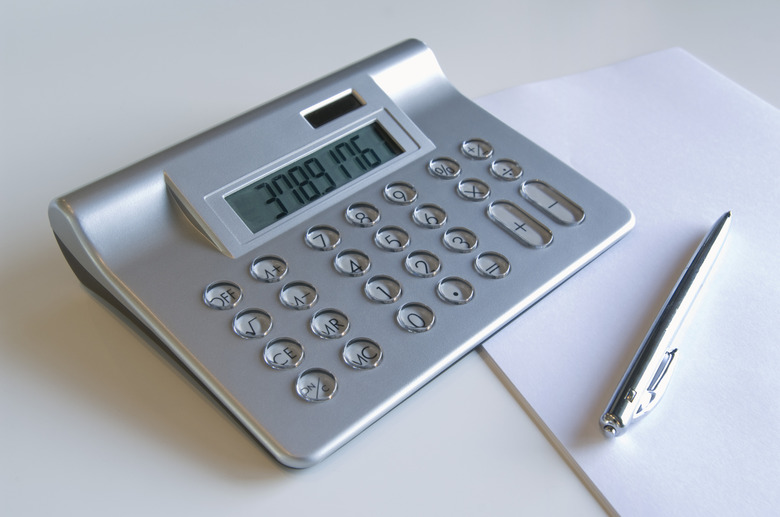How To Calculate Resistance In A Parallel Circuit
Many networks can be reduced to series-parallel combinations, reducing the complexity in calculating the circuit parameters such as resistance, voltage and current. When several resistors are connected between two points with only a single current path, they are said to be in series. In a parallel circuit, though, the current is divided among each resistor, such that more current goes through the path of least resistance. A parallel circuit has properties that allow both the individual resistances and the equivalent resistance to be calculated with a single formula. The voltage drop is the same across each resistor in parallel.
Step 1
Get the current and the voltage. This may be a value that is given to you in a theoretical problem or something that you measure, using a voltmeter, ammeter or multimeter. The voltage only needs to be obtained over one resistor, since it is the same for all. However, the current Ij (j = 1,2, ...,n) needs to be found for each resistor, where Ij represents the current flowing through the jth resistor in parallel, and there are n resistors in total.
Step 2
Calculate the resistance Rj (j = 1,2, ...,n) of each element, where Rj represents the resistance of the jth resistor in parallel and there are a total of n resistors. The resistance of each element is given by the formula Rj = V / Ij. For example, if you have three resistors in parallel with a voltage drop of 9 Volts and currents I1 = 3 Amps, I2 = 6 Amps and I3 = 2 Amps, the resistances are R1 = 3 Ohms, R2 = 1.5 Ohms and R3 = 4.5 Ohms.
Step 3
Calculate the equivalent resistance for the circuit, if it is part of a larger network. A group of resistors in parallel can be replaced by a single equivalent resistance Req, which simplifies calculations when trying to obtain network parameters. Now instead of a group of resistors in parallel there is a single equivalent resistance with the original voltage V across it and a current I total flowing through it, that is the sum of all the currents through each of the resistors in parallel. The equivalent resistance Req for a parallel circuit is given by the sum of the reciprocals of the individual resistances as follows
1 / Req = 1 / R1 + 1 / R2 + ....1 / Rn.
The equivalent resistance is always smaller than any of the individual resistances in a parallel circuit. For the example with the three resistors the equivalent resistance is Req=0.82 Ohms. Which means the circuit can be replaced with a single resistor with a resistance of 0.82 Ohms, voltage of 9 Volts and a current of 11 Amps.
TL;DR (Too Long; Didn't Read)
For the special case of two resistors in parallel, the currents are inversely proportional to their resistances. The formula V = I1 * R1 = I2 * R2 can be rearranged to give R1 / R2 = I2 / I1.
References
Cite This Article
MLA
Leathem, Selma. "How To Calculate Resistance In A Parallel Circuit" sciencing.com, https://www.sciencing.com/calculate-resistance-parallel-circuit-6239209/. 24 April 2017.
APA
Leathem, Selma. (2017, April 24). How To Calculate Resistance In A Parallel Circuit. sciencing.com. Retrieved from https://www.sciencing.com/calculate-resistance-parallel-circuit-6239209/
Chicago
Leathem, Selma. How To Calculate Resistance In A Parallel Circuit last modified March 24, 2022. https://www.sciencing.com/calculate-resistance-parallel-circuit-6239209/
